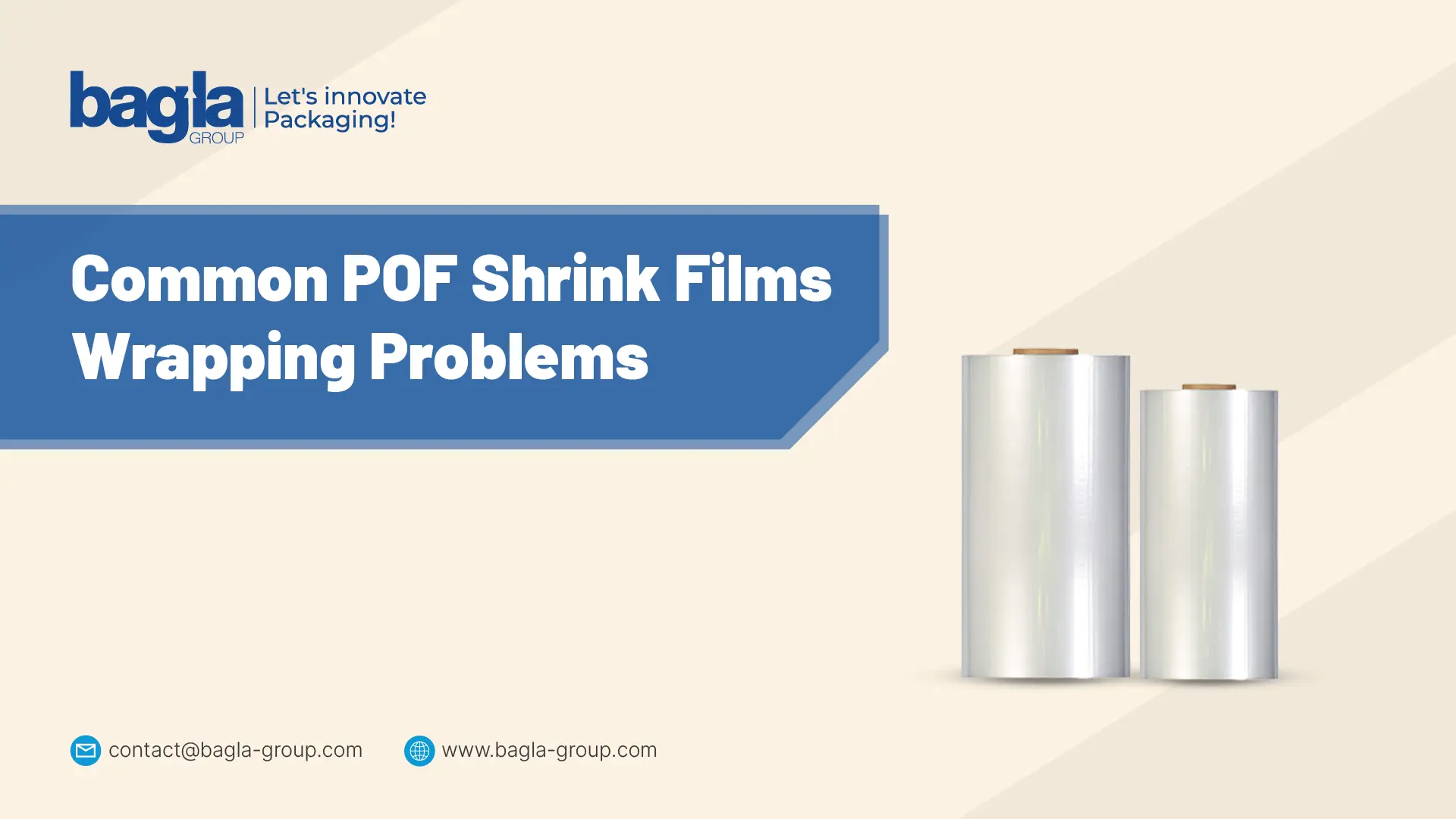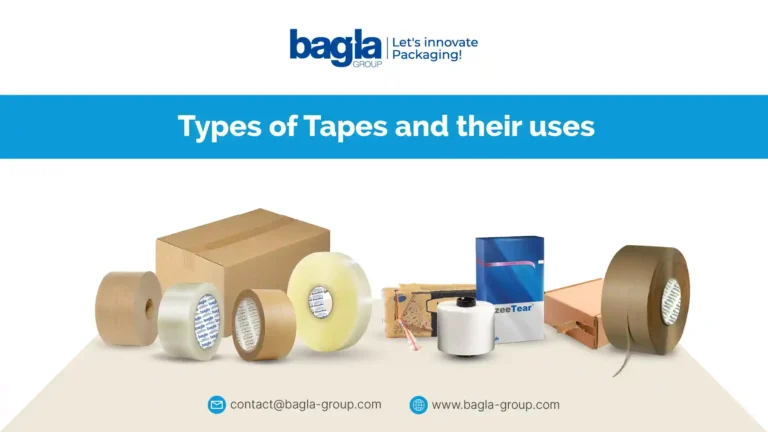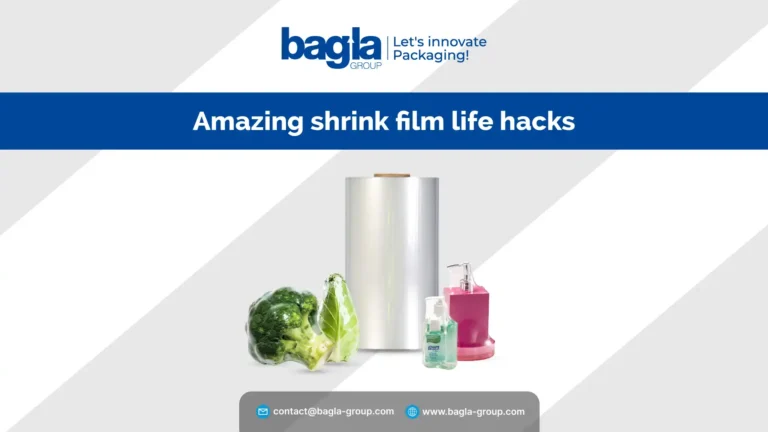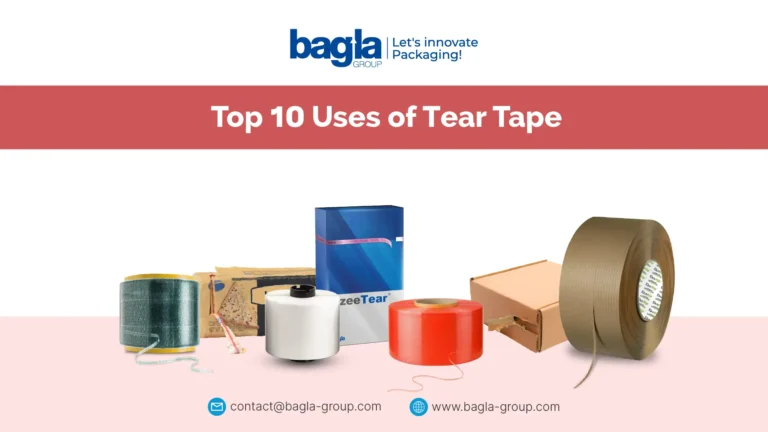(Polyolefin) POF Shrink Films are a popular choice for the packaging industry. It is valuable due to its clarity, strength, puncture resistance, and eco-friendly properties. POF Shrink films are used for wrapping food items, electronics, books, cosmetics, and many other retail products. With all these advantages, POF shrink films can sometimes present challenges. So, here you will go through all the common POF shrink film wrapping problems.
Understanding these common issues and implementing proper solutions is key to ensuring a seamless packaging workflow and high-quality output.
List Of 5 POF Shrink Film Wrapping Problems
Below you will find the major issues and their solutions if you are facing POF shrink films problems:
1. Folds and Wrinkles in POF Shrink Films :
Folds or wrinkles in the shrink film after heat application are a common issue, especially for those new to shrink wrapping. The causes of these folds and wrinkles are insufficient or uneven heat distribution, inadequate tension during film application, and overlapping layers of film before shrinking.
Solutions
- Adjust Heat Application – If you are using a heat gun, then focus more heat on the wrinkled section. You need to move the gun in a sweeping motion to avoid overheating one spot.
- Using Heat Tunnel – If you are using a heat tunnel, then you must increase the tunnel temperature or reduce the conveyor speed for better heat exposure. You must ensure that the airflow inside the tunnel is uniform and directed properly.
- Maintain the proper film alignment and tension before shrink wrapping.
2. Corner Accumulation (Dog Ears)
This refers to the shrink film accumulating at the package corners, a problem often referred to as ‘Dog Ears’. While some corner accumulation is inevitable in any shrink-wrapped package, excessive accumulation can be minimized by applying additional heat to the shrink film. These kind of issues occurs due to uneven shrinking around corners, the film is not taut enough before heat is applied & package dimensions are not suitable for the selected film size.
Solutions
- Apply additional localized heat to the corners to help the film conform and tighten around the edges.
- Use a smaller bag size or custom-sized shrink sleeve to reduce excess film.
- Employ L-sealers with better film alignment or use pre-perforated film rolls that shrink more uniformly
3. Air Entrapment in POF Shrink Films
This occurs when excess air gets trapped inside the sealed shrink film after heat application, causing a ‘ballooning’ effect. It’s challenging to predict which products will cause this issue. If it occurs, small vent holes can be made in the film to prevent it. Perforated shrink film rolls and bags are available to counteract this problem.
Solutions
- Use pre-perforated POF shrink film that contains micro holes to let trapped air escape during the shrinking process.
- Manually punch small pinholes in the film if pre-perforated film is unavailable.
- If sealing manually, leave a slight air passage or seal loosely to allow some ventilation before shrinking.
4. Heat Damage in POF Shrink Films :
This happens when too much heat is applied to the shrink film, resulting in burn holes. If a heat gun is causing this issue, it should be held further away from the product. If a shrink tunnel is being used, consider increasing the conveyor speed or reducing the heat.
Solutions
For manual operations:
- Hold the heat gun 6–12 inches away from the package
- Use a lower temperature setting, and move continuously to avoid localized heat spots
For tunnel operations:
- Reduce tunnel temperature
- Increase conveyor belt speed to limit exposure time
Use multi-layer POF films that have better tolerance to heat and prevent melting under normal conditions
5. Film Breakage in POF Shrink Films :
Breakages in shrink film are often due to the type or thickness of the film being used. If breakages occur, consider using a thicker film or a different type of film. If PVC is being used, consider switching to a polyolefin or a polyethylene.
Solutions
- Switch to a thicker gauge film (e.g., 19 microns instead of 15 microns)
- Choose cross-linked POF shrink films, which offer higher tensile strength and puncture resistance
- Ensure the product surface is smooth, or use corner protectors if needed
Additional Tips for Optimal Shrink Wrapping with POF Films
- Preheating Period: Always allow heat tunnels to preheat for at least 10–15 minutes to stabilize internal temperature.
- Proper Film Storage: Store shrink films in a cool, dry place away from direct sunlight to maintain flexibility and clarity.
- Regular Maintenance: Clean sealing wires and heat tunnel components regularly to avoid carbon buildup, which can affect performance.
- Choose the Right Equipment: Use automatic L-bar sealers and tunnel machines designed for POF films to ensure efficiency and consistent quality.
Conclusion – POF Shrink Film Wrapping Problems
In this guide, you will understand the problems that occur due to shrink films and how you can resolve them. These are the basic issues that can be resolved by understanding the process. To make it more crystal clear, you can use the valuable, effective Bagla Group POF shrink films that can be customized as per the buyer’s requirements.



